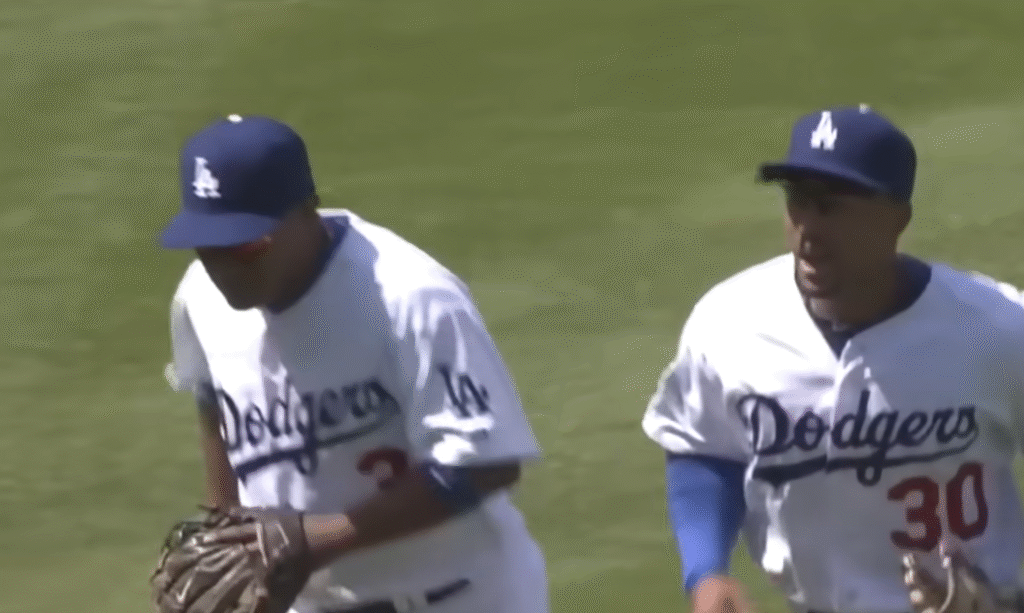Nearly 80% of professional baseball players were technically overweight or obese by BMI standards, according to Penn State researchers in 2016. This statistic is remarkably similar to the general trend in American society. Baseball, however, adds complexity to the story because a larger frame frequently offers a remarkably effective advantage, especially for pitchers and hitters who depend more on strength and mass than on pure speed.
This paradox was personified by Babe Ruth. His legendary ability to smash baseballs into the stands was unaffected by his weight fluctuations. Actually, his size might have given his swing more force, making him a statistical anomaly and a cultural phenomenon. Even though he wasn’t particularly thin, his performance was a striking example of how physical prowess isn’t always synonymous with fitness.
Tony Gwynn brought this tale into the present day. Gwynn, who was more known for his line-drive consistency than his power, carried a frame that was remarkably similar to that of regular fans in the stands. Despite his well-known joke about being “built by Betty Crocker,” he was one of the most respected players of his generation due to his career batting average and command of contact hitting. His accomplishments demonstrated that in baseball, abilities like hand-eye coordination and tactical awareness are more important than body composition.
Player Profiles: Baseball and Body Size
| Player | Team(s) Played For | Height/Weight | Playing Era | Reputation for Size | Career Highlights | Source Link |
|---|---|---|---|---|---|---|
| Babe Ruth | New York Yankees, Red Sox | 6’2” / 215–265 lbs | 1914–1935 | Iconic slugger with fluctuating weight | 714 HRs, 2,214 RBIs, 7-time World Series champ | MLB.com |
| Tony Gwynn | San Diego Padres | 5’11” / ~235 lbs | 1982–2001 | “Built by Betty Crocker” self-joke | 8 NL batting titles, 15 All-Star games | ESPN |
| Prince Fielder | Brewers, Tigers, Rangers | 5’11” / 275 lbs | 2005–2016 | Known for body positivity, ESPN Body Issue | 319 HRs, 6 All-Star selections | Men’s Health |
| CC Sabathia | Indians, Yankees, Brewers | 6’6” / 290 lbs | 2001–2019 | Towering pitcher with heavy frame | Cy Young Award, 3,000+ strikeouts | Penn State |
| Bartolo Colón | Expos, Mets, Angels, others | 5’11” / 285 lbs | 1997–2018 | Fan favorite, “Big Sexy” persona | 2005 Cy Young, 247 wins | SI |

When Prince Fielder defiantly celebrated his 275-pound body in a nude appearance on ESPN’s Body Issue, he brought the topic into the mainstream of culture. Although the public’s reaction varied from derision to appreciation, his wider influence was especially novel: he came to represent body positivity in professional sports. Fans accustomed to only seeing well-defined bodies in magazines were challenged by Fielder’s audacity, which sparked an unexpectedly inexpensive discussion about acceptance and inclusivity.
The situation involving CC Sabathia illustrates how size in baseball has two sides. He was strong and had a commanding presence on the mound thanks to his 6’6″ frame and nearly 300 pounds. However, the weight became a health issue as his career progressed, requiring him to change his way of life. His open thoughts on wellness significantly enhance his story and teach fans and other athletes an important lesson: while carrying extra weight can improve performance temporarily, maintaining balance is necessary for long-term health.
For similar reasons, Bartolo Colón became a cult figure. He was a fan favorite due to his longevity and stocky build, earning him the nickname “Big Sexy.” Despite his unusual build, seeing him pitch well into his forties served as a motivational reminder that skill, perseverance, and passion can frequently surpass beauty. His career serves as an example of how baseball, in contrast to other sports, can accommodate players of all body types.
This has a significant societal connection. Because its players frequently resemble the fans themselves, baseball is particularly relatable. Baseball accepts players who resemble neighbors, coworkers, or family members, in contrast to sports like basketball or track where bodies seem superhuman. This relatability explains why fans feel a strong emotional connection to players like Fielder or Colón—they think that greatness can come from bodies that don’t fit the mold of traditional athletic ideals.
Yet, there is no denying the health risks associated with obesity. Joint problems, heart problems, and other chronic conditions are common among former heavy players. Although bulk can improve performance right away, researchers warn that carrying extra weight can have expensive aftereffects. Sabathia’s admission of his personal difficulties emphasizes how crucial it is to differentiate between obesity that is medically concerning and performance-driven mass.
The increase in heavier athletes can be attributed to baseball strategy itself. Power hitting has taken precedence in the sport since the 1990s, with home runs being valued more highly than speed or base stealing. Although this cultural change has been incredibly successful in providing entertainment, it has also rewarded bigger players who can outshine opponents, even at the expense of their defensive prowess. This effect is enhanced by the designated hitter role, which frees heavy sluggers from defensive demands. This is best demonstrated by David Ortiz, who became a hero in Boston despite having a body that went against accepted athletic standards.
Analysis is further complicated by the steroid era, which coincided with rising BMIs. Increased muscle mass made it harder to distinguish between obesity and sheer bulk. However, the visual reality supported the notion that baseball accepts larger bodies in a manner that other sports do not, regardless of whether bulk was introduced naturally or artificially.
This relationship is strengthened by cultural rituals. Ballparks serve decadent fare, such as loaded nachos, foot-long hot dogs, and even deep-fried novelty items, which represent baseball as a game and a culinary adventure. The bond between fans who eat a lot and watch athletes whose bodies resemble their own is incredibly strong. Baseball was once described by ESPN as “the only sport played with real American bodies,” which, despite its humor, conveys the closeness between the athlete and the spectators.
But things are starting to change. Agility, defense, and conditioning are becoming more and more important to analytics-driven teams. Once disregarded in baseball, nutritional science is now crucial to player development. The era of celebrated bulk may be eroding as younger prospects train under more stringent dietary and fitness regimens. Nevertheless, baseball will always be able to accommodate a wider range of body types than most other sports because of the cultural memory of Ruth, Gwynn, Sabathia, and Fielder.
In the end, there are two possible answers to the question of whether or not baseball players can be obese. Because the demands of the game place more emphasis on skill than speed, they can indeed carry a lot of weight and still perform exceptionally well at times. However, even if performance obscures the risks, obesity in the medical sense still poses a threat to health. This dichotomy is especially useful for igniting more general discussions about inclusivity, athleticism, and the various manifestations of excellence.
